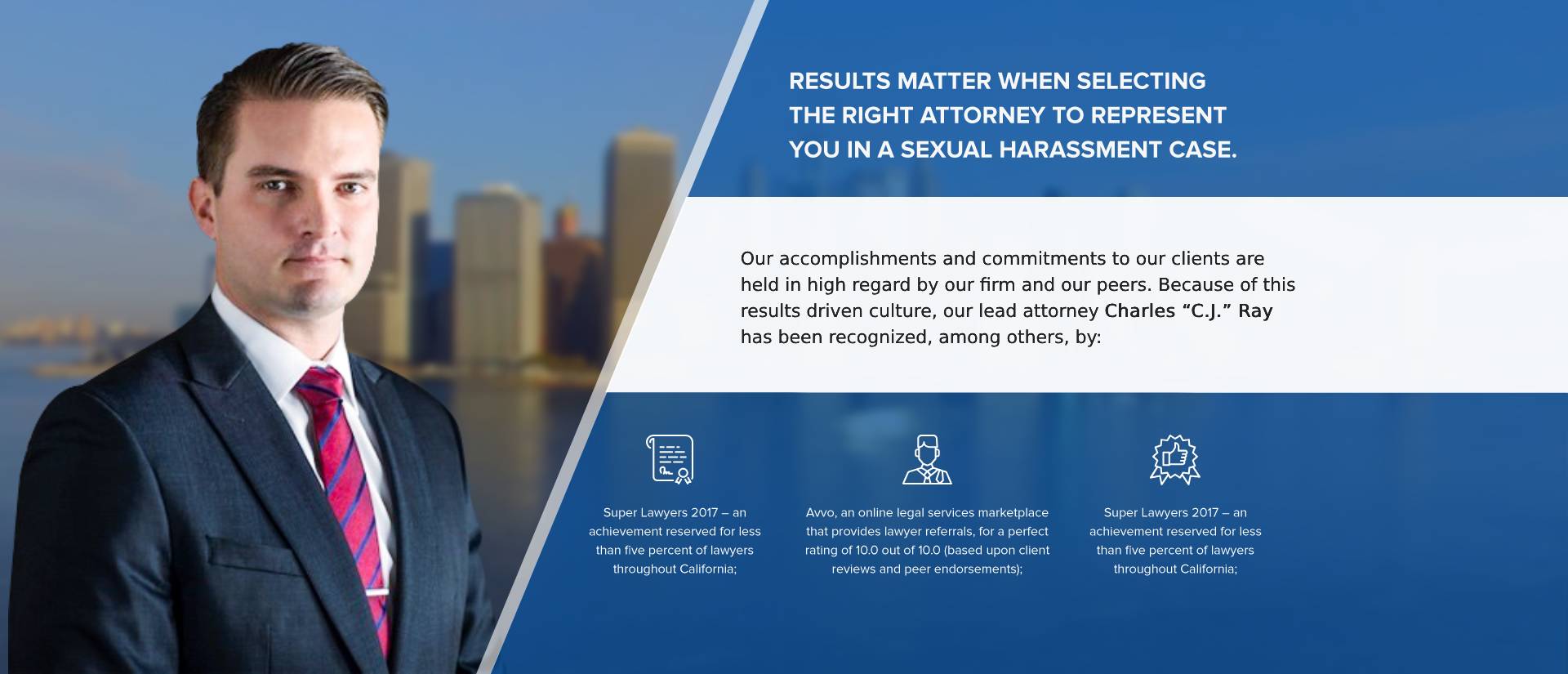If you run a corporation or an organization with several people working under your authority, you must ensure a safe working environment for all. A safe work environment should be conducive for all, without harassment or discrimination. You must develop and adhere to a company or organization policy designed according to various statutes that protect human and employee rights. Mastering all these laws and abiding by them all the time can be challenging. However, you can develop an effective personnel policy and practice for your workplace.
At Sexual Harassment Attorney, we understand how tough it is to maintain a safe workplace for your workers. We can help you develop a practical personnel policy stipulating the dos and don'ts and disciplinary actions to be taken against those who violate the policy. We will ensure that your policy includes all the aspects of your workplace environment, including the types of jobs you offer, the number of workers, and any hazardous working conditions in your company or organization. We will ensure your policy aligns with the policies governing your particular trade in California.
Here are answers to some of the frequently asked questions regarding personnel policies and practices to help you develop an effective one for your workplace:
Maintaining Employee Information
Employers and managers receive sensitive and confidential employee data that must be protected from public scrutiny. Employee information or knowledge in your hands must not be leaked out without the employee’s authorization. You must keep that data in an employee’s file, accessible only to a few individuals.
An employee's file should contain their job application letter, appointment contract (complete with their job description, salary, and benefits), offer letter, legal documents submitted during a job application, and performance evaluations. This information is very sensitive, as it can ruin the employee’s life if the wrong person accesses it.
When handling your employee’s documents, you must obtain Forms 1-9 from all of them. A Form 1-9 is a legal document used to prove the authenticity of an employee and the suitability of an applicant to work in the country. Employers must keep these forms in a different file from personnel documents.
Other documents you need and must carefully maintain are your employees' medical files. You need a separate file for these, too, according to the Americans with Disabilities Code of 1990. This statute also provides guidelines on ways to handle employee medical files.
Who Can and Cannot Access Personnel Files?
Remember that your employees’ files are private because of the sensitive information they contain. Thus, you must keep them private, ensuring limited access to the various documents. You must keep them securely, preferably in a lockable cabinet. If the files are in softcopy, you must limit access to the online location where you keep them. You can create a secure password for the account containing those files.
Employees who need access to their files can do so with supervision from authorized persons, like a supervisor or HR manager. Ensure your employees understand the importance of not altering or tampering with the personnel files.
What Actions to Take in a Breach of Employees’ Medical Records?
According to EEOC directives, employers must keep employees‘ medical records private and safe and not share them with unauthorized personnel. Employees can request that their shared records be destroyed. If their request is denied, the employee can seek assistance from Health and Human Services to find a way forward.
Remember how critical employee medical records and Forms 1–9 are. They need adequate safekeeping and maintenance and should be separated from other personnel files. If these records are breached, you will benefit more from helping the employee manage the situation.
Do I Need an Employee Handbook?
An employee handbook is critical, as it can help you avoid issues with EEOC violations, which could result in lawsuits against your business. Employee handbooks help you minimize work-related problems by providing a detailed depiction of everyone’s job descriptions and other regulations and policies governing workers in your business. Through the handbook, your employees understand your expectations of them and the rules everyone must abide by. It also educates everyone on your workplace policies. This ensures everyone understands how to behave in the workplace.
A handbook reduces the times you encounter conflicts and issues and how often you correct your workers. It will also be helpful when a worker files a claim with EEOC against your company for harassment or discrimination.
Thus, developing a detailed employee handbook should be a priority. It should contain the job details of everyone in your workplace, and the policies governing individual behavior and expectations. A well-written handbook will help in the following areas:
- It ensures everyone is aware of and understands the policies and rules of their workplace and can follow them.
- It helps management maintain excellent employee conduct by ensuring they know what the business can tolerate and what is intolerable.
- It takes care of part of your responsibilities as an employer, especially if there is a complaint or someone brings up an allegation with the EEOC.
Your employee handbook can also contain guidelines regarding using online email accounts and the Internet while on the job. Most companies today have adopted guidelines that protect sensitive information shared within a company and company operations. Once the handbook is complete, document and share it with everyone in your business. Provide clarity in case some of the rules or policies are unclear to some workers.
How to Handle Employees Intending to File a Claim with EEOC?
If an employee feels discriminated against or harassed in their workplace, they have every right to file a claim with EEOC. Although they can notify you (the employer) about their intentions to file a claim against your business, you cannot stop them or dictate the terms of their action. Employees are free to bring such claims before EEOC if they are unsatisfied with the protection and practicability of their workplace. Once they decide to file a claim, you must give them the support they need to make it happen. For example, you can provide contact details of the EEOC office near your workplace to enable them to reach out to a counselor for guidance and assistance.
However, you can set the situation on suitable terms, or the EEOC will require you to agree to an alternative resolution measure for workplace disputes. You can also avoid facing claims like these by protecting your employees against workplace discrimination and harassment. The right thing to do would be to develop a detailed policy that prohibits specific acts and jokes in the workplace.
Your employee will file a complaint with the EEOC if you fail to make their working environment safe and conducive. Once this happens, you can settle the matter out of court to avoid the complex and tedious courtroom processes. This should happen within 180 days of the employee filing the complaint and EEOC starting an investigation against your business. If, after 180 days, you have not settled the matter with your employee, EEOC will require you to attend court hearings to discuss appropriate remedies.
The good news is that you can avoid EEOC claims. Employers are encouraged to take workplace discrimination and harassment matters seriously. You must also pay attention and take action against complaints from your employees. Take proper action to prevent the recurrence of discrimination and harassment cases. Additionally, keep reminding your employees about what is provided in the employee handbook, including the workplace policies and job descriptions. This reduces cases and incidents in workplaces for the satisfaction of everyone involved.
What Constitutes Workplace Discrimination?
Workplace discrimination mainly occurs when a job applicant or worker is denied a particular right on the basis of their disability, genetic information, age, national origin, race, color, pregnancy, gender preference, or sexual orientation. The Equal Employment Opportunity Commission provides laws against workplace discrimination. This is also the body that handles discrimination-related cases between employers and employees. Title VII of the Civil Rights Act (1964) prohibits employers from discriminating against employees on any of the bases mentioned above. Employers are also encouraged to address workplace discrimination cases to avoid facing EEOC lawsuits.
You can face accusations of workplace discrimination for many reasons, including developing a policy targeting particular individuals directly or indirectly. For example, you cannot have an all-male or all-Christian policy at your workplace. Anyone interested in working in your business must have an equal opportunity, provided they meet the required qualifications to perform at a particular job. If you deny a person a job opportunity based on anything else than their competence, you risk facing a discrimination lawsuit.
Workplace policies are critical to the growth of any business. Thus, you must provide this information in your employee handbook to inform your employees and equip them with the information they need to protect themselves against discrimination. Your employees must understand what discrimination constitutes and how to defend their rights. Job seekers must also know the discriminating actions or words to look out for in job advertisements, during recruitment, when hiring, and when an employer provides benefits or workplace accommodations.
You are responsible for ensuring everyone is handled fairly in your business. All your employees must enjoy the same benefits. If not, you could face a discrimination lawsuit with the EEOC.
What Guidelines Do You Need When Evaluating Employees?
Employee evaluations are crucial as they help determine employees' strengths and areas for improvement. They benefit employees and supervisors and can determine the pace at which your business grows. Once your employees understand their weak areas, they can work on them to improve their overall performance and your business productivity.
However, employee evaluations must be carefully done to achieve the desired results. Remember that your employees are different in terms of their skills and job descriptions. Thus, you must use various parameters to determine their productivity.
Base your evaluations on individual performance and an employee’s job description. You could also consider the work ethic, quality of employee performance, devotion to their job, and communication abilities. However, you must ensure all your employees understand their job descriptions and the goals they are working towards. You can provide a document or handbook with their job details and information by which they will be evaluated after a particular period.
When evaluating your employees, evaluate all your workers. Use the same parameters for employees with the same job description. Do not pay more attention to a particular employee’s shortcomings than you do to the others. Involve your workers in the evaluation and ensure they understand why it is essential.
Remember that employee evaluations are critical to a business's growth. Maintain proper records of all the evaluations you conduct in your workplace, taking note of employees who perform well and those who require assistance to do better. You will need this information when deciding who to promote, place on probation, or replace after a series of penalties.
Deciding Who to Accomodate in Your Workplace?
Your employees have diverse needs, which you must consider when making critical decisions, like who to accommodate. Employees with disabilities will require additional support to function better. Thus, consider providing adequate accommodation to them upon request. However, this must be done after you have obtained a complete review of their medical condition and a recommendation by a medical professional. This will ensure you understand precisely what they need.
With complete information regarding a disabled employee's medical condition, you will know whether your business can accommodate them and how much of their needs you can cater to. Remember that you are protected by law against providing employee accommodation if it will cause unnecessary hardship for your business. For example, when a disabled worker requires an additional person to assist them in accomplishing their tasks, it is okay not to accommodate employees if your business cannot hire an extra person.
Thus, you must carefully consider what is at stake when accommodating your employees. Do not commit to something that will put your business in an unfair hardship. Only provide accommodation if it is favorable for your business, and you can financially fulfill your employee’s request.
What Does a Disciplinary Policy Entail?
In addition to implementing a policy that governs employee behavior in the workplace, you need a clear disciplinary policy. The latter outlines actions you must take if one or more employees violate the company policy. Taking action in your workplace could prevent significant issues resulting in harassment or discrimination lawsuits against your business or you as an employee.
Your employees must understand their job description right from the start. They must also know what the business can tolerate and what is intolerable regarding words and actions. This information should be available from an employee’s start date to avoid conflicts with other workers and the need to correct intolerable workplace behavior. When everything is transparent, you will protect your business from unnecessary lawsuits that could damage its reputation and growth.
Misconduct should not be tolerated once employees understand the business’ policies and job descriptions. A disciplinary policy prepares employees on what to expect once they violate the business policies. For example, if one employee harasses or discriminates against another, there should be clear guidelines on what will happen to them. For example, a manager can lose their position or job if found guilty of workplace harassment or discrimination.
Additionally, work closely with all your workers to understand the challenges and issues they are dealing with. A discrimination or harassment complaint should not catch you by surprise. Listening to your workers and protecting their rights also improves your working environment, boosting your business productivity. You can easily and quickly correct misconduct before it escalates into a significant problem and an EEOC claim.
Carefully discipline employees, following the guidelines of your disciplinary policy. This ensures fair treatment for everyone who violates your business policy. No one should receive a harsher penalty than another if they have committed the same violation. Also, explain to your employees why they are being disciplined. Document all work-related incidents and take stern action against habitual offenders. If you terminate an employee, document everything, including the reason for and termination date. Follow the legal requirements when terminating an employee to avoid legal issues. The information you gather when disciplining an employee will come in handy when the employee reiterates by suing you or your business for unfair discipline or termination.
Find a Competent Sexual Harassment Attorney Near Me
Discrimination and harassment in workplaces are prevalent in California. They occur when an employer, manager, or supervisor violates their employees' rights. Employees are encouraged to understand their rights to defend themselves against discrimination and harassment and take action when it happens.
You can protect yourself against related lawsuits as an employer, too. You need to create a safe and conducive working environment for your employees. Our attorneys at Sexual Harassment Attorney can also help you develop a personnel policy and practices to ensure your employees understand their job description and acceptable behavior in your business. The policy will include your workers’ job descriptions, words and actions allowed, words and actions not allowed, and disciplinary guidelines in case of misconduct.
Our attorneys understand what is at stake if employees are harassed and discriminated against and if they file lawsuits against their employers. Working with us can promote transparency and a safe and healthy working environment for your business. Call us at 800-905-1856 to learn more.



